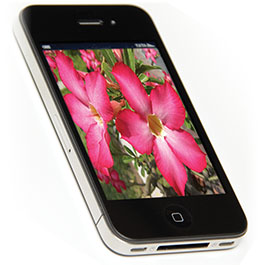 Summer 2013
Summer 2013
A work of art? Absolutely. Straddling Carnegie Museum of Art’s extensive aluminum design collection and its funky chair col- lection, this innovative set of baby wheels known as the Origami is the world’s first power-folding stroller, meaning it opens and closes with a touch of a button. It has running lamps, too, not to mention an LCD console with thermometer, speedometer, and odometer, and a place to charge a cell phone. To boot, it’s energy conscious—simply pushing it charges it. The stroller first caught the eye of museum director Lynn Zelevansky early last year during an event centered on Pittsburgh’s creative location at the intersection of art and technology. Designed by Pittsburgh-based 4moms, this “mobile seating” for children is a fantastic example of “cutting-edge, contemporary product design,” says Rachel Delphia, the museum’s associate curator of decorative arts and design. “It’s a completely new take on the stroller—and it brings the story of Pittsburgh as an innovator right up to the present moment.” Debuting on the market just last May, the Origami already has a national profile. Among those sporting the high-tech, high-performance vehicle that retails for $850: actress Natalie Portman.
Carnegie Mellon University and Carnegie Museum of Natural History have partnered up again, and this time they’re helping the medical community identify a pesky problem: poisonous plants. It may seem like an unlikely pairing. Cynthia Morton, the museum’s curator of botany, teamed up with Marios Savvides, director of CMU’s CyLab Biometrics Center, best known for its cyber security solutions. The researchers figured the facial recognition software developed by Savvides and his team could be used to identify plants, too. Both were stunned to learn there’s no definitive database for identifying plants and their suggested treatments. When a patient arrives in the ER after ingesting an unknown plant, doctors search through volumes of medical toxicology books or visit the online source Micromedics—which, as it turns out, is far from complete. “After talking to ER doctors,” says Morton, “I realized we have something here.” So she and Savvides worked with National Poison Control to compile a list of the most reported plants from the last 10 years, which includes backyard culti- vars, wild plants, and houseplants. They pared the list of the top 32 plants to 10 and presented the idea to UPMC for funding, which resulted in $100,000 to create an initial database and mobile app. Morton and her team collected and scanned the specimens, providing 50 to 100 two-dimensional images per plant to account for different stages of growth. CMU’s team then used various mathematic representations of the shapes, textures, and other features to analyze the images. Now, using a smartphone, you can take a picture of these plants, and in an instant learn their technical name, toxicity, and treatment. A convenience the team hopes will soon be used by doctors.
"That we accomplished this without conscious effort indicates that, over the last few decades, women artists— especially younger ones—have achieved unheard-of levels of acceptance." - Lynn Zelevansky, director of Carnegie Museum of Art, after discovering that 45% of the museum’s art purchased since 2009 are by women. Of the museum’s post- 1945 art objects (acquired anytime in the last 68 years), only 12.4% are by women.
Now Playing at The Warhol Taking a cue from similar video blogs such as NPR’s Tiny Desk Concerts, artists performing as part of The Andy Warhol Museum’s Sound Series are now playing a more intimate, stripped down version of a few songs either before or after their main performance in the museum’s theater. These private recording sessions, available on The Warhol’s website, are created in the museum’s 6th floor gallery space designed to evoke Warhol's studio, the Silver Factory.
Hundreds of people—some from as far away as Peru, Taiwan, France, Germany, and Finland— submitted some 1,500 images as part of Carnegie Museum of Art’s Oh Snap! Your Take on Our Photographs, a participatory project that invited responses to 13 eclectic photographs from the museum’s collection.
It’s quite impressive that three presidents of national academies—leading independent experts in their respective fields—have roots in the region. In May, Carnegie Science Center honored the trio— Ralph Cicerone, president of the National Academy of Sciences; Charles Vest, president of the National Academy of Engineering; and Harvey Fineberg, president of the Institute of Medicine—with its prestigious Chairman’s Award at its annual Carnegie Science Awards ceremony held at Carnegie Music Hall in Oakland. For 17 years, the awards program has celebrated the best and brightest innovators in science and technology across western Pennsylvania. Cicerone, chair of the National Research Council, is a native of New Castle. His research in atmospheric chemistry, climate change, and energy has involved him in shaping science and environmental policy at the highest levels nationally and internationally. Fineberg, a Pittsburgh native, has devoted most of his academic career at Harvard University in the fields of health policy and medical decision-making. Vest, originally from Morgantown, is also president emeritus of the Massachusetts Institute of Technology and has served on numerous federal committees on topics ranging from weapons of mass destruction to transformational diplomacy to higher education.
|
Lost Kingdoms Found · Past Meets Present · Family Matters · Celebrating a Great Ride · Special Section: A Tribute to Our Donors · Chairman's Note · Face Time: Nick Bubash · Artistic License: Pop Cabaret · Field Trip: “Shocking Success” in Libya · Science & Nature: Building for Bees · The Big Picture
 |
Copyright © 2017 CARNEGIE Magazine. All rights reserved. |






